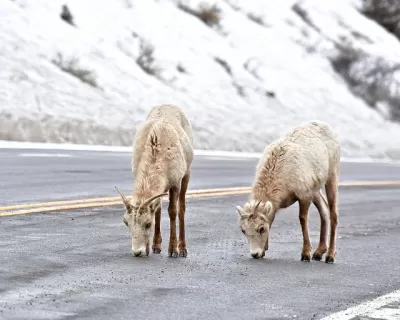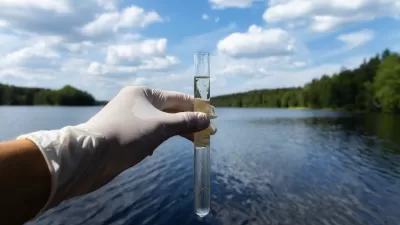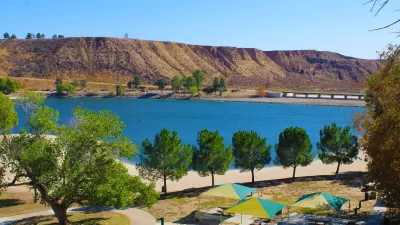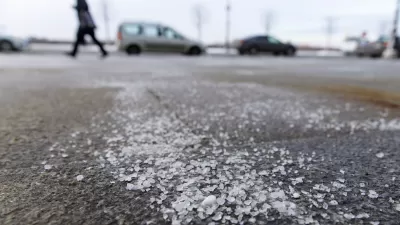According to scientists, increasingly salty lakes pose health risks not just to their fish and plant life but to the people who drink their water.

A study published in Proceedings of the Natural Academy of the Sciences found that in the 371 lakes observed, 44% showed evidence of long-term salinization. "No federal body tracks how much salt gets spread on our roadways or makes its way into our lakes. So the researchers hoovered up a vast number of different data sets, produced by states, municipalities and universities," Ben Guarino reports in the Washington Post. The study has big implications for drinking water around the country. "Extrapolating that finding for all of North America, at least 7,770 lakes are at risk of elevated salt levels — a likely underestimate," Guarino reports. This salt is coming, in large part, off roads and highways.
These salts cannot all be filtered out of drinking water. "Increased salt in drinking water poses health problems to humans who have kidney trouble, use dialysis or have hypertension," Guarino writes. And while some suggest that better management of salt use could curb the issue, there's evidence that salt consumption may continue to rise. "In winter 2014, the Wall Street Journal reported that road salt prices surged by 20 percent due to a huge demand," Guarino writes.
This exposes another challenge to the preservation of lakes in North America, which lost some of their protections following legislation from a Republican Congress, signed by President Trump, repealing Surface Mining's Stream Protection Rule.
FULL STORY: Salt from icy roads is contaminating North America’s lakes

Maui's Vacation Rental Debate Turns Ugly
Verbal attacks, misinformation campaigns and fistfights plague a high-stakes debate to convert thousands of vacation rentals into long-term housing.

Planetizen Federal Action Tracker
A weekly monitor of how Trump’s orders and actions are impacting planners and planning in America.

In Urban Planning, AI Prompting Could be the New Design Thinking
Creativity has long been key to great urban design. What if we see AI as our new creative partner?

King County Supportive Housing Program Offers Hope for Unhoused Residents
The county is taking a ‘Housing First’ approach that prioritizes getting people into housing, then offering wraparound supportive services.

Researchers Use AI to Get Clearer Picture of US Housing
Analysts are using artificial intelligence to supercharge their research by allowing them to comb through data faster. Though these AI tools can be error prone, they save time and housing researchers are optimistic about the future.

Making Shared Micromobility More Inclusive
Cities and shared mobility system operators can do more to include people with disabilities in planning and operations, per a new report.
Urban Design for Planners 1: Software Tools
This six-course series explores essential urban design concepts using open source software and equips planners with the tools they need to participate fully in the urban design process.
Planning for Universal Design
Learn the tools for implementing Universal Design in planning regulations.
planning NEXT
Appalachian Highlands Housing Partners
Mpact (founded as Rail~Volution)
City of Camden Redevelopment Agency
City of Astoria
City of Portland
City of Laramie





























